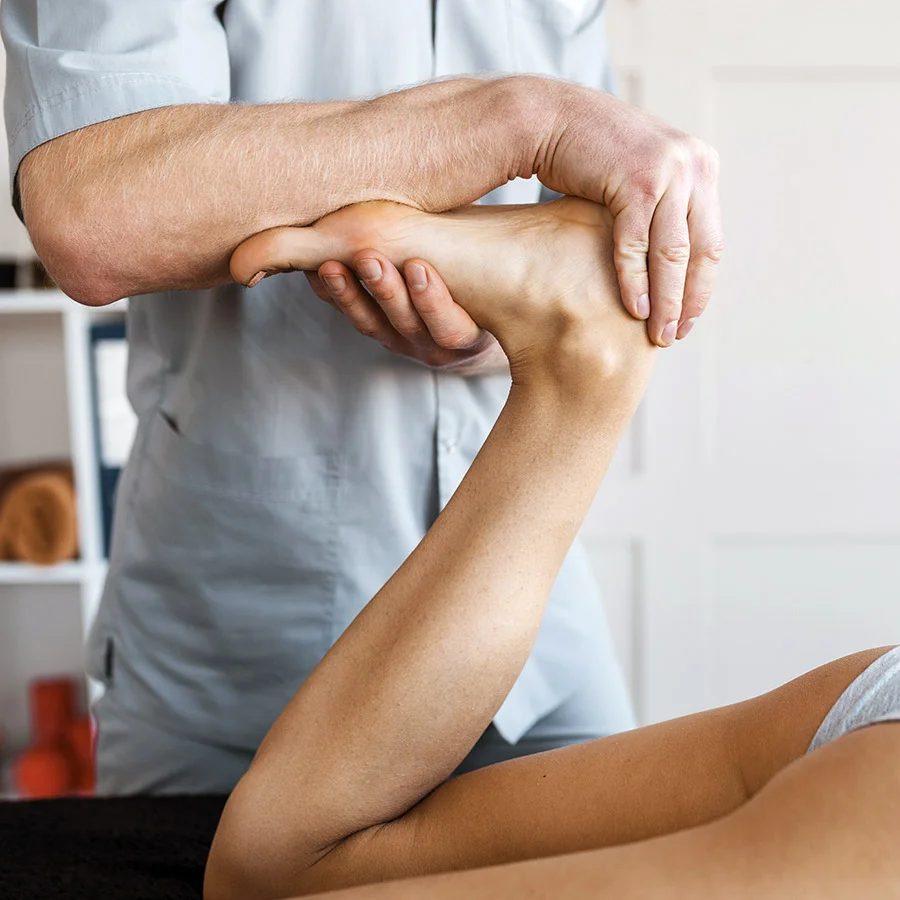Finding Relief: How a Manual Therapist in London Can Transform Your Health
In the bustling city of London, where the pace of life can often take a toll on both mind and body, a manual therapist can be a beacon of hope.
These skilled professionals specialize in offering a range of therapeutic treatments, from spinal adjustments to sports massages, all tailored to ease pain, restore movement, and bring lasting relief.
With their deep knowledge of anatomy and innovative approaches to therapy, manual therapists in London have become indispensable for those seeking a natural and effective path to recovery.
Expertise and Personalization
A good manual therapist prioritizes the patient’s unique needs and creates a comprehensive treatment plan. With specialties such as:
- Spinal Adjustments and Manual Therapy: Techniques to align the spine and unlock joint restrictions, relieving pain and restoring mobility.
- Therapeutic Massage: Soothes muscle tension, promotes blood flow, and aids relaxation, particularly effective for back pain.
- Acupuncture: An ancient Chinese practice using sterilized needles to balance the body’s energy, ideal for chronic pain management.
- Sports Massage: Accelerates recovery for athletes, reducing inflammation and promoting flexibility.
- Kinesiotaping: Stabilizes joints, minimizes lymphatic swelling, and provides support without restricting movement.
These treatments address the root causes of discomfort and aim to restore the body to its optimal state.
Holistic Approach to Pain Management
Manual therapists believe in a holistic approach that doesn’t just mask symptoms but resolves their source.
They often integrate multiple techniques like massage therapy, acupuncture, and kinesiotaping to maximize results.
Whether you’re dealing with sciatica, migraines, joint pain, or chronic back issues, a good therapist will design a strategy to improve your quality of life.

Preventative and Ongoing Care
Regular visits to a manual therapist can prevent recurring problems.
These specialists offer advice on posture correction, work ergonomics, and exercise routines, which can significantly reduce the risk of injury.
Their expertise helps you develop healthy habits and maintain your progress long-term.
Advanced Training and Passion
In London’s diverse therapeutic landscape, the best manual therapists stand out by constantly updating their skills through specialized training and courses.
This dedication ensures that their patients receive cutting-edge care, rooted in the latest scientific research and practice.
A great therapist is not only knowledgeable but also compassionate, making the healing journey positive and empowering.
Manual Therapy in London The Road to Recovery
No matter what your condition is, finding a manual therapist in London can be a transformative step towards recovery.
From the initial consultation to ongoing treatments, they will work with you to alleviate pain, improve your mobility, and get you back to doing what you love.
Whether you’re an athlete recovering from an injury or someone seeking relief from everyday aches, manual therapy is a powerful tool that can change your health trajectory for the better.
Investing in your well-being with the right manual therapist is more than just a short-term solution; it’s a commitment to a healthier, more active life.
Manual Therapist in London at PRO Massage lets see an example:
This case study examines a successful example of integrating various therapeutic methods into the practice of a moral therapist in London.
The PRO Massage treatment and massage center provides a comprehensive approach to therapy that reduces physical symptoms and promotes patients’ psychological recovery.
The modern pace of life, especially in large cities like London, often leads to stress buildup, which can manifest as both physical and emotional discomfort.
Patients coming to PRO Massage frequently complain of chronic pain, fatigue, and emotional exhaustion.
Solution
PRO Massage offers a multidisciplinary approach to treatment, including:
- Myofascial Therapy: Helps relax muscles and improve circulation.
- Sports and Deep Tissue Massage: Addresses physical pain and aids rapid recovery.
- Acupuncture and Manual Therapy: Relieve chronic pain and promote emotional relaxation.
- Personalized Consultations: Center specialists diagnose and develop individual treatment plans tailored to each patient’s unique needs.
Manual Therapy in London Based on Mrs. Mariola’s Experience

Mrs. Mariola, a 45-year-old marketing professional living in London, began experiencing chronic back and neck pain after transitioning to remote work during the COVID-19 pandemic.
Long hours spent at a makeshift desk led to poor posture and muscle tension, significantly impacting her daily activities.
She sought relief through over-the-counter pain medications and ergonomic adjustments, but the pain persisted, affecting her productivity and sleep.
Initial Consultation
Frustrated with her lack of progress, Mrs.
Mariola sought help from a reputable manual therapy clinic in London.
During her initial consultation, the therapist conducted a comprehensive assessment, reviewing her medical history and daily routines.
The therapist identified several key issues:
- Muscular Imbalances: Resulting from prolonged sitting and insufficient movement.
- Poor Posture: Contributing to neck and upper back strain.
- Decreased Mobility: In the shoulders and lumbar spine.
Together, they established treatment goals, focusing on reducing pain, improving posture, and increasing overall mobility.
Manual Therapy Treatment Plan
The therapist developed a personalized plan involving:
- Joint Mobilization and Manipulation: To restore movement in stiff joints.
- Soft Tissue Massage: Targeting trigger points in her upper back and neck.
- Postural Education: Providing ergonomic tips for her home office setup.
- Exercise Program: Incorporating gentle stretches and strength-building exercises.

Over the course of 8 weeks, Mrs. Mariola attended weekly sessions. Key observations included:
- Initial Relief: After the first few sessions, her neck and shoulder pain started to subside, and she noticed reduced muscle tightness.
- Improved Mobility: By the fourth session, she had significantly better neck rotation and less back stiffness, making it easier to sit and work.
- Sustained Improvements: Following the exercise plan and postural advice allowed her to maintain progress between appointments.
- Reduced Stress: The therapy sessions helped her feel more relaxed and positive, supporting better sleep quality.
By the end of her treatment, Mrs. Mariola reported a substantial reduction in pain, improved posture, and increased flexibility. She now continues with monthly maintenance sessions and her prescribed exercises to prevent recurrence. This case exemplifies how personalized manual therapy can effectively address chronic pain caused by lifestyle factors and significantly improve a patient’s quality of life.
Frequently Asked Questions about a Manual Therapist in London

What is manual therapy, and how does it differ from other treatments?
Manual therapy is a hands-on treatment approach that focuses on diagnosing and treating musculoskeletal issues.
It involves techniques like joint mobilization, manipulation, and soft tissue work to alleviate pain, improve range of motion, and restore function.
Unlike treatments that rely on devices or medications, manual therapy emphasizes the practitioner’s skill and touch to manipulate joints, muscles, and fascia directly.
The main difference between manual therapy and other treatments is its personalized, non-invasive approach that targets specific areas of the body.
While other therapies might focus on symptomatic relief, manual therapy seeks to address the root causes of dysfunction.
What conditions can manual therapy treat?
Manual therapy is effective for a wide range of musculoskeletal conditions, including:
- Back and Neck Pain: Alleviates pain resulting from poor posture, herniated discs, or muscle strain.
- Sports Injuries: Helps athletes recover from ligament strains, muscle tears, and other injuries.
- Joint Disorders: Improves mobility in conditions like arthritis, frozen shoulder, and tendonitis.
- Chronic Pain: Relieves persistent pain due to repetitive stress injuries or conditions like fibromyalgia.
- Post-Surgical Recovery: Speeds up recovery and reduces scar tissue formation after surgery.
How long does it take to see results from manual therapy?
Results vary depending on the severity of the condition and the individual’s response to treatment.
Acute conditions may improve significantly within a few sessions.
For chronic conditions, noticeable improvements may take a few weeks or months.
Regular follow-up sessions are often recommended to maintain progress and prevent recurrence.
Are there any risks or side effects associated with manual therapy?
Manual therapy is generally safe when performed by a trained and licensed practitioner.
Common side effects include mild soreness or fatigue, usually subsiding within 24-48 hours after a session.
To minimize risks, it’s essential to provide the therapist with accurate medical information and promptly report any discomfort during treatment.
Manual therapy is not recommended for patients with severe osteoporosis, certain vascular conditions, or those recovering from acute fractures.
How should I prepare for a manual therapy session?
Before your appointment:
- Wear Comfortable Clothing: Choose clothes that allow easy access to the treatment area.
- Document Symptoms: Write down your symptoms, triggers, and questions to discuss with the therapist.
- Share Medical History: Inform the therapist about any existing conditions, medications, and past injuries or surgeries.
How many sessions will I need, and how often should I come in?
The number of sessions depends on your diagnosis and treatment goals.
In acute cases, 1-3 sessions might suffice, while chronic conditions may require ongoing care.
Initially, sessions may be scheduled weekly or bi-weekly.
Once symptoms improve, the frequency can be reduced to monthly or on an as-needed basis.
Can manual therapy be combined with other treatments?
Yes, manual therapy is often used in conjunction with other treatments, such as physical therapy, acupuncture, or exercise programs, to enhance overall effectiveness.
A comprehensive treatment plan may include therapeutic exercises to strengthen muscles and improve flexibility, lifestyle modifications to reduce strain, and ergonomic advice to prevent future issues.
How do I find a qualified manual therapist in London?
To find a reputable manual therapist:
- Check Credentials: Ensure they are licensed and registered with professional bodies.
- Read Reviews: Look for patient testimonials or referrals.
- Consult a GP: Ask your general practitioner or a specialist for recommendations.
Manual Therapist in London

A manual therapist in London specializes in hands-on techniques to diagnose and treat musculoskeletal issues.
They use methods like joint mobilization, manipulation, and soft tissue therapy to relieve pain, restore mobility, and improve overall function.
Unlike treatments relying on devices or medications, manual therapy emphasizes direct, skilled touch to target joints, muscles, and fascia.
Manual therapy is effective for treating conditions like back and neck pain, sports injuries, joint disorders, and chronic pain.
The treatment process begins with a thorough assessment to develop a personalized plan.
While the results vary based on individual cases, many patients notice improvements after a few sessions, particularly for acute issues.
Manual therapy is generally safe, with minimal side effects like mild soreness or fatigue that resolve quickly.
It’s best suited for people without severe conditions like osteoporosis or acute fractures.
To find a qualified manual therapist in London, check for proper licensing, read reviews, and seek referrals from healthcare providers.
Combining manual therapy with other treatments, such as exercise programs or lifestyle adjustments, often provides comprehensive results.
While the cost varies, some insurance plans may cover it with a doctor’s referral.
Overall, manual therapy is a valuable approach for restoring physical health and reducing stress, benefiting people with diverse therapeutic needs.
